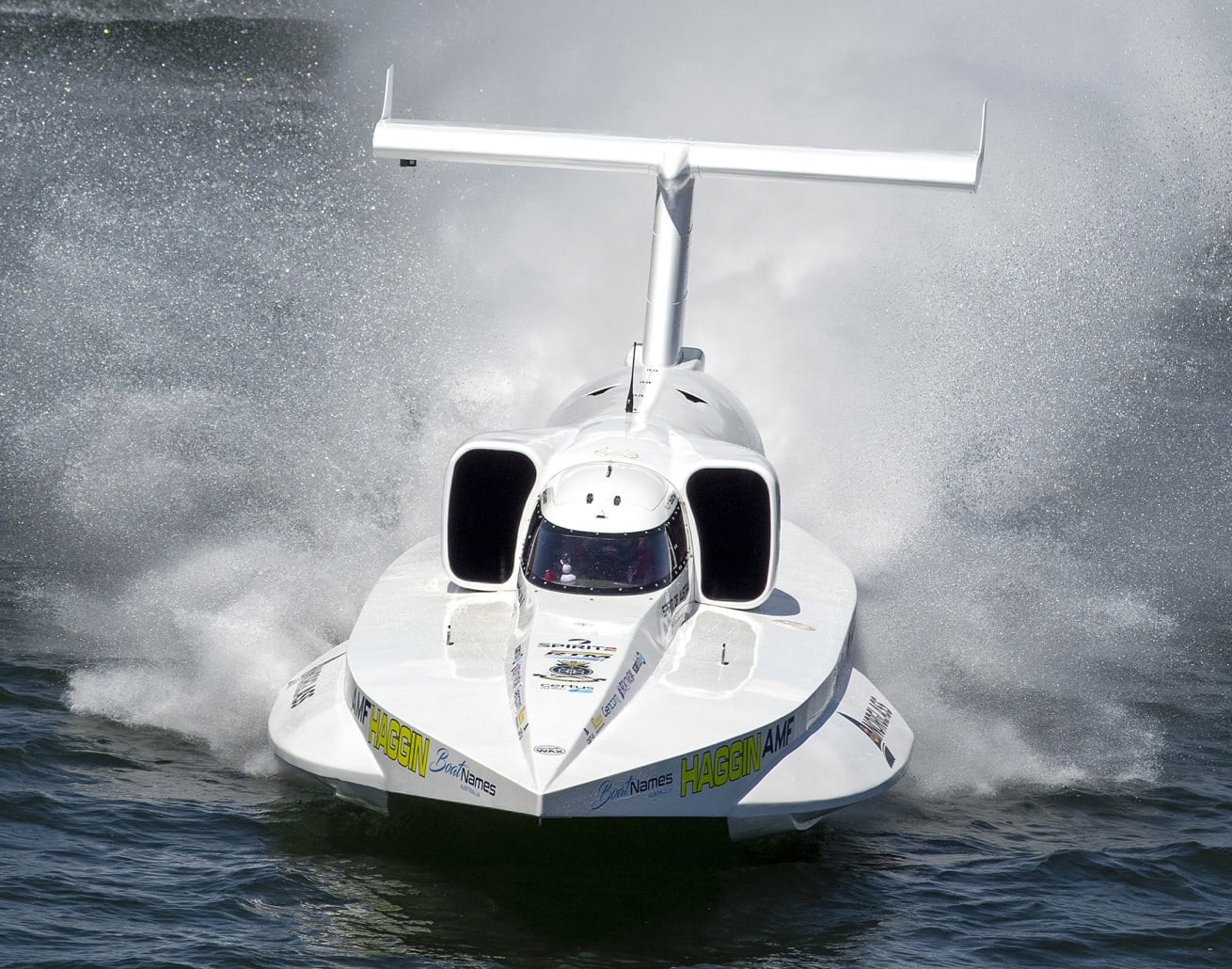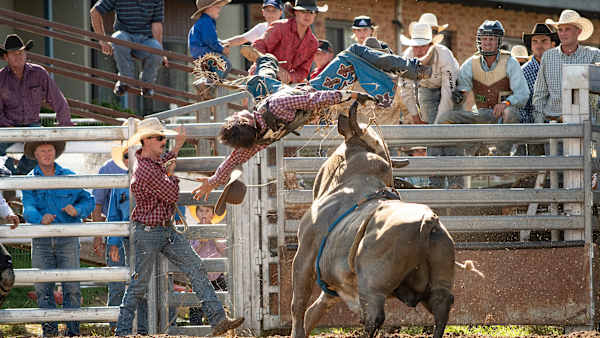When Dave Warby returns to Tumut’s Blowering Dam in November 2023, it may well be his most significant trial to date on a journey that has now stretched over five years.
Speaking to the Snowy Mountains Magazine in the lead up to his next trial on November 18-19, Dave said the data collected from previous trials plus all the minor modifications made to the boat may have now unlocked the chapter for the next stage. That is, to push the boat faster at every run and determine the boat handling with safety.
In recent visits, Dave admits they were fighting a few gremlins with Spirit of Australia II hampering their quest to push on safely. They have gained confidence from their last outing reaching their fastest speed yet at 265 miles per hour (426 km/h).

Recap Of Past Five Years
“We’ve really been chasing handling problems on the water and it's made the boat a real handful to drive,” said Dave
“It's been improving. It's a lot better than the first time we ever put it on the water, but it's just been able to solve those problems and overcome the problems and drive through it safely. “When you have the steering wheel just about shaking out of your hands at 400k (kilometres per hour) you know you’ve got a problem. So you've got to fix that.
Dave said the pandemic certainly made it run longer than they anticipated, being out of action for 18 months. “After COVID we came down there four times and we got rain and wind every time we came down. At these speeds now, you've really got to have good weather on your hands or it's not worth putting the boat in the water.”
Commenting on equipment changes with replacing rudders, Dave said it was not one issue and he was chasing the symptoms and not the problem. “There was a period where I was really looking at the rudder and the symptoms of the handling. And it's only through more tests running and getting more data that we've been able to really hone in on where the problem is. The rear of the boats been like fishtailing itself like a car in loose gravel or in the wet that's been sliding around.”
They have worked on engineering and geometry around the steering and rudder to avoid any shaking of the steering wheel at fast speeds.
“The boats got the power and it can move really quickly to get to the speed, but you got to make sure it slows down and it's comfortable to drive at those speeds. Redoing the steering geometry, we’ve been able to identify it. Last run that was a vast improvement on getting up to speed, holding the speed and slowing down so it wasn't a handful to drive.”
Spirit of Australia II does not lack power. Dave has stated this from early days. “It's really doing it safely. I mean, you know if something goes wrong and the boats not handling right it's not going to end well. And once you get up around 400k It's just about doing it safely.”

Comparisons to Ken’s Boat
There will always be comparisons to Dave's dad the late Ken Warby. Ken is an Australian legend and the current world record holder of the water speed record since 1978 set at 511.11 km/h (317.59 mph). Sadly he passed away earlier this year. Dave said Ken’s journey was four years until he broke the record.
Dave spoke of the differences of Ken’s boat even with testing, where now the team must book water space months in advance. “Back in the day when dad done it, he could go to a local boat meet and put your boat in and test it and find things out, but that's harder for us. We've got some aspects that’s a lot easier, we've got a better engine. He was always struggling with his engine, he never had enough power really.”
Water Conditions and The Course
Dave describes driving the boat at speed when conditions are not perfect, and what water the team prefer.
“You don't want it like a pond, if it's dead smooth you actually get a little bit more drag on the boat. That really affected dad's boat a lot because he didn't have the power to push against that force, but with our boat, we’ve got the power to push against that and then go fast in smooth water. The boat feels better with a little bit of a ripple on the water.”
“Last run I’m going through rough water at about 220, and then going into Yellowin Bay down towards that end of the dam, it just smoothed out so I can put my foot down on it and it was just a much better handling boat.” (top speed was 265 mph last outing)
“A bit of chop that's not too bad. You can have it on the nose of the boat or behind the boat. But the big problem is when you've got a crosswind. Many times I've had a wind coming across, so when you start running down the course I'm aiming towards Yellowin Bay and by the time I just get going, I get blown off course and ended up in another part of the dam.
“You can't really fight the steering at that speed to straighten it up. You've got to really get off the power, then straighten up, and then get back on the power.”
On course Dave looks down the straight and lines up power lines and landmarks in the distance. He will be travelling over 5 kilometres towards Yellowin Bay.
“Getting on top of the water I just gradually bring the power on and the boat will lift up on top of the water. I don't put the power on too hard because the boat can lean to the right a little bit because at lower speeds it doesn't have enough air under the boat. It rides on somewhat of a cushion of air at about 200 mile per hour.”
“You’ll feel the back of the boat start to move slightly and you're probably turning the wheel a quarter of a turn or just under a quarter of a turn each way to keep it straight. Being thrust driven the engine wants to go where the boats pointing, so you've got to be really careful in a situation like that too.”











